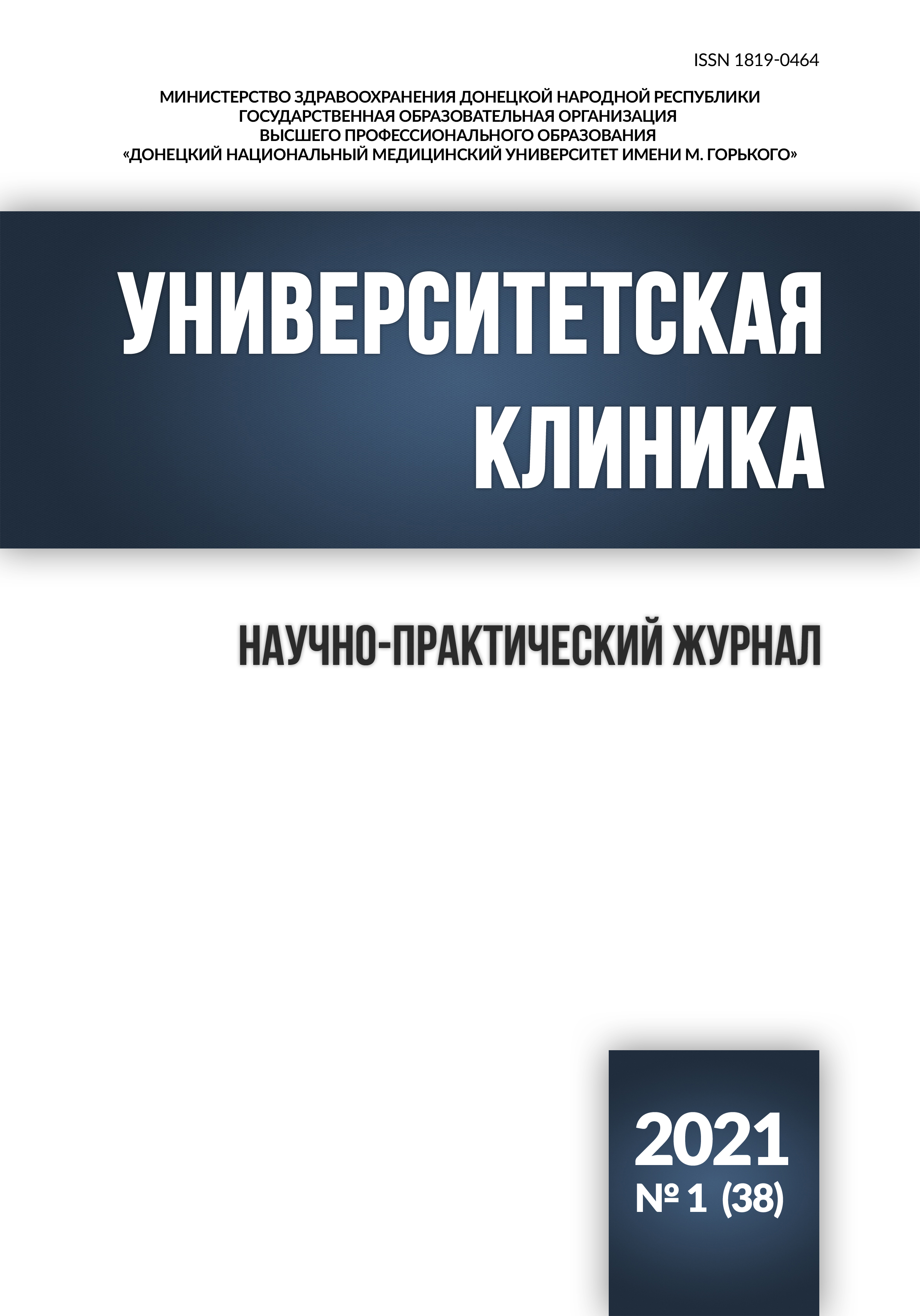ОПТИМИЗАЦИЯ ЛАБОРАТОРНОЙ ДИАГНОСТИКИ ОСТРОГО ГЕРПЕТИЧЕСКОГО СТОМАТИТА
Аннотация
Вступление. В работе приведено обоснование применения цитологического метода диагностики острого герпетического стоматита у детей. Достоинствами метода являются простота, доступность, дешевизна. Это позволяет широко применять его и в диагностике, и в динамике лечения.
При одинаковой технике выполнения цитологического исследования оценка его результатов проводится различными авторами по-разному. Основным недостатком существующего цитологического метода авторы считают изучение биопсийного материала только из эрозированной слизистой покровного типа при отсутствии оценки слизистой десны, относящейся к жевательному типу.
Цель исследования – оптимизация цитологического метода диагностики у детей с острым герпетическим стоматитом.
Материал и методы. Проведено клинико-лабораторное обследование 60 детей в возрасте 1-3 лет, больных острым герпетическим стоматитом. Предложен алгоритм анализа и описания цитограмм препаратов, изготовленных из микробиоптатов эрозированной покровной слизистой оболочки полости рта и слизистой десны. При этом соблюдается следующая этапность описания каждой цитограммы. На первом этапе подсчитывается число неповрежденных и поврежденных клеток эпителия. На втором определяется количество и разновидность клеток соединительнотканной популяции (количество неизмененных и разрушенных нейтрофилов, число фагоцитов, лимфоцитов, моноцитов и эритроцитов). Третий этап предусматривает изучение количественного и качественного состава микрофлоры в материале. На четвертом этапе определяется реакция адсорбции микроорганизмов клетками эпителия. Все данные, полученные в результате анализа цитограмм по описанной методике, вносились в составленную авторами специальную учетную форму в виде таблицы, которая составлялась на каждую цитограмму.
Результаты и обсуждение. Проведенный анализ цитограмм позволил дифференцированно подходить к применению лекарственных средств на разных этапах лечения острого герпетического стоматита у детей. К примеру, выявленное в первый день обращения за помощью преобладание в препаратах поврежденных эпителиальных клеток расценивается авторами как существенное цитопатическое действие вируса и влечет за собой противовирусную терапию. Снижение цитопатического действия вируса сопровождается преобладанием неповрежденных клеток эпителия, что позволяет отменить противовирусные препараты. Это же касается назначения местной терапии с учетом характера и количества микрофлоры. Коррекцию местных лечебных мероприятий необходимо проводить учетом цитологических данных, полученных в динамике наблюдения за патологическим процессом.
Выводы. Предложенный алгоритм анализа цитограмм микробиопсийного материала при остром герпетическом стоматите у детей младшей возрастной группы позволяет оптимизировать процесс диагностики патологического процесса. Возникает возможность коррекции назначения лекарственных средств с учетом цитологических данных, полученных из очагов поражения в динамике наблюдения и лечения острого герпетического стоматита.
Литература
2. Виноградова Т.Ф., Максимова О.П., Мельниченко Э.М. Заболевания пародонта и слизистой оболочки полости рта у детей. Москва: Медицина; 1983. 208.
3. Попова О.І. Клініко-експериментальне обґрунтування застосування Амізону та Біфіформу у комплексному лікуванні герпетичних стоматитів у дітей і дорослих [автореферат]. Одеса; 2007. 22.
4. Казмирчук В.Е., Мальцев Д.В. Клиника, диагностика и лечение герпесвирусных инфекций человека. Киев: Феникс; 2009. 248.
5. Сорокин Ю.Н. Герпетические поражения периферической нервной системы. Лекция (второе сообщение). Лабораторная диагностика герпетической инфекции. Международный неврологический журнал. 2015; 2 (72): 139-143.
6. Рабинович О.Ф., Рабинович И.М., Разживина Н.В. Рецидивирующий герпетический стоматит. Москва: ГЭОТАР-Медиа; 2005. 64.
7. Регурецька Р.А. Особливості клінічного перебігу та лікування простого герпесу слизової оболонки порожнини рота та губ у осіб молодого віку [автореферат]. Київ; 2008. 21.
8. Васильева Н.А., Булгакова А.И., Имельбаева Э.А. Анализ цитограмм у больных воспалительными заболеваниями пародонта. Казанский медицинский журнал. 2011; 92 (1): 41-45.
9. Елизарова И.В. Применение цитоморфометрического метода для диагностики и оценки эффективности лечения катарального гингивита у детей, находящихся на ортодонтическом лечении [автореферат]. Волгоград; 2006. 24.
10. Петрунина О.В. Клинико-цитологическая диагностика воспалительных осложнений в тканях пародонта при ортодонтическом лечении с использованием несъемной техники [автореферат]. Москва; 2008. 27.
11. Кислых Ф.И., Макуха В.А. Сравнительный анализ лечения чистых и вторично-гнойных ран челюстно-лицевой области. Пермский медицинский журнал. 2008; ХХV (4): 35-39.
12. Рединова Т.Л., Дмитракова Н.Р. Диагностика в терапевтической стоматологии. Ростов-на-Дону: Феникс; 2006. 144.




